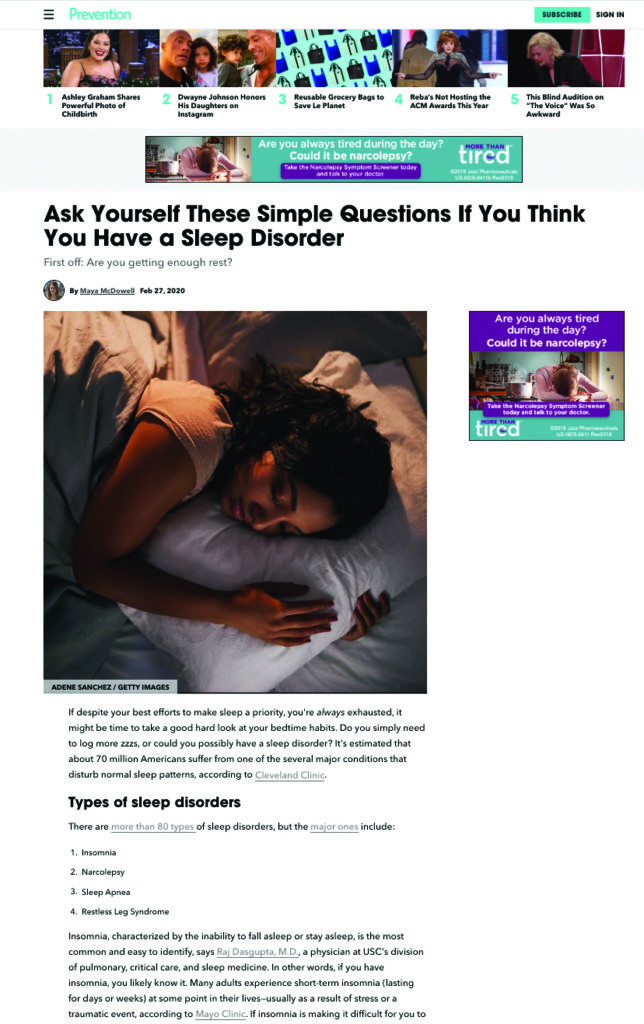
You can likely count on one hand the number of executives on the marketing/sales side of the media business who describe themselves as “a total journalism nerd.” Most have an appreciation of and affection for journalism — at least in theory — but few seem to deeply feel its myriad intricacies and frustrations and glories.
Then there’s Todd Haskell, who started his career nearly three decades ago as an intern at The New York Times and hasn’t looked back. “I’ve never done anything else,” he says. “The through line for my career is trying to create environments for really talented journalists to do great work. I just don’t touch the pictures or the words.”
He arrived at Hearst Magazines almost seven years ago following lengthy stints at the Times and Meredith, which means his career has bridged the media world’s analog and digital eras. It also means his particular skill set is nicely in tune with the current environment.
“I’ve been through a few of those organizational evolutions,” he says. “I feel like I’ve been around, first at the Times and now here, at a time when we needed to adapt our editorial brands to recognize and acknowledge how people want to engage with us, versus how we’d want them to engage with us in a dream world.”
Haskell believes few publishing monoliths can match Hearst Magazines’ brand slate and its appeal to health and wellness marketers. Among the less-obvious candidates for marketers’ attention (and dollars), he points to Good Housekeeping and Woman’s Day owing to their continued appeal to older audiences.
“There’s so much heat in the pharma market to reach baby boomers and people in that 45-plus age bracket,” he notes. He places O: The Oprah Magazine in a similar bucket: “It’s age-based, but also the African-American community is really hungry for information on how to manage their health and the health of their families. Pharma marketers want to be there.”
Haskell also touts renewed growth at three of the publications acquired from Rodale in 2018, venerable living-well brands Prevention, Women’s Health and Men’s Health. “There’s been a huge amount of goodwill and love from the marketing community,” he says. “It was difficult for Rodale to invest in those products. What we’ve done is give them access to data and insights they’ve never had before, which translates into programs for advertisers that are much more advanced and sophisticated.”
Haskell doesn’t restrict his pharma-marketer pitch to publications that skew older, however. Referring to millennial-focused brands such as Cosmopolitan, Elle and Marie Claire, he’s skeptical about the widely held belief that people “don’t start thinking about managing their health until they’re my age and start falling apart.” That’s why Hearst Magazines invested heavily in a research study, conducted alongside Open Mind Strategy, on issues and concerns related to generational health.


The companies haven’t yet disclosed the full breadth of their findings — they had been slated to debut them on March 12 at Hearst Magazines’ first-ever Health and Wellness Summit, which was postponed amid the coronavirus crisis — but Haskell is enthusiastic about sharing the results with internal and external audiences alike.
“When you think about how people are managing things like work-life balance and stress, there are profound implications for how we need to talk to our readers and how marketers need to talk to our readers,” he explains. While he declines to give an extensive preview, he believes the findings vis-à-vis the generational divide in mental health will be of great interest to condition-adjacent marketers, challenging pre-existing notions about “having it all.”
“Historically for women, there’s been this idea that you can have it all — but one of the things we found was that, you know, you might have to make some choices,” he explains. “Managing mental and physical health and anxiety, you have to prioritize. You have to manage it all in stages, which I think has profound implications for pharma marketers, health and wellness marketers, people selling food products, you name it.”
When it comes to the future, the natural question is whether Hearst Magazines will continue its push — alongside the competition and, well, pretty much everyone and everything else — into the digital realm. Haskell notes that, right before he arrived at Hearst in August 2013, Cosmopolitan’s digital footprint was around 7 million monthly users; it’s currently north of 48 million, according to Google Analytics.
It’s a revolution he and his Hearst Magazines co-conspirators have every intention of fomenting, regardless of the presence of the word “Magazines” on his business card. “Let me be clear: We are totally committed to print products.
They’re important and beloved to readers and sort of the ultimate manifestation of what our brands mean,” Haskell explains. “But there’s so much more these brands can represent. Plus, as a big magazine business within an even larger privately held media company, we have the ability to weather inevitable disruptions in the media ecosystem.”
Put succinctly, Haskell doesn’t fear what’s next. “In five years, we’ll be producing more video journalism than written-word journalism. We’ll be producing more journalism on social platforms that don’t exist today than on the ones that do,” he says. “I’m excited. We all should be.”
From the April 01, 2020 Issue of MM+M - Medical Marketing and Media







